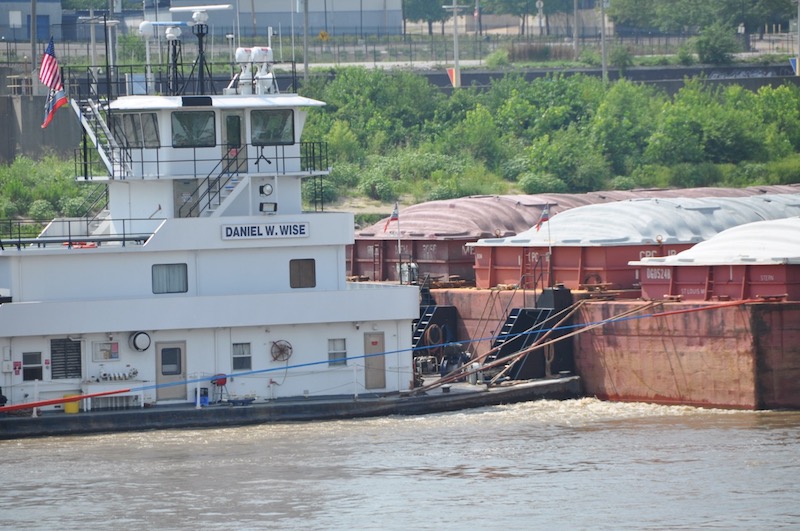Posted by Lt. Amy Midgett, USCG Public Affairs
The Towing Vessel National Center of Expertise recently published the latest additions and updates to the Frequently Asked Questions on Subchapter M inspected towing vessels. To access the full library of FAQs regarding Subchapter M, visit TVNCOE’s website.
Subchapter M FAQs
Part 136 – Certifications
FAQ 136-015 – Class NK envisions continuing vessel attendance for as-yet uninspected tugboats. What are the Coast Guard’s expectations for TPOs in this situation after July 20, 2018?
Regardless of the inspection status of a Subchapter M vessel, a TPO may attend towing vessels at any time per the owner or managing operator’s contractual arrangements. If a vessel is listed on the owner or managing operator’s TSMS certificate, the TPO should ensure that any Subchapter M discrepancies identified are corrected and should notify the cognizant OCMI. For additional discussion refer to TOPOCO FAQ 136-043, Vessel Actions During Phase-in.
FAQ 136-019 – Will there be additional restrictions on local Coast Guard offices on Limited Geographic Areas (LGAs)?
No. At this time we do not envision placing additional restrictions on the local Captain of the Port (COTP) in making determinations of LGAs. A vessel owner/managing operator seeking to operate in an LGA under the provisions of an excepted vessel should request permission from the local COTP at the earliest possible time as to avoid confusion during the application for inspection. In the case a vessel is determined to operate solely within an LGA and considered an “excepted” vessel in accordance with Subchapter M, it will be noted on the vessels COI.
FAQ 136-034 – For the purpose of Inspected Towing Vessels in 46 CFR 136.110 – Definitions – Does the definition of Western Rivers include the entire Gulf Intracoastal Waterway (GICW) from St Marks to Rio Grande or is it on the sections of the GICW not listed in 33 CFR 89.27 (b) (1-12)?
For the purposes of applying the navigation safety regulations for towing vessels the waters of the “entire Gulf Intracoastal Waterway from St. Marks, Florida, to the Rio Grande, Texas including the Morgan City-Port Allen Alternate Route and the Galveston-Freeport Cutoff” are included. 33 CFR 89.27 text, including the stated exception for the applicability of the Inland Navigation Rules, Rule 24(c) on certain waterways listed therein, does not affect the definition as used in Sub M.
FAQ 136-043 – I’m not scheduled to phase in until 2020. Until then, do I need an annual survey, a vessel inspection, and am I part of the random audit pool?
All vessels must be compliant with Subchapter M on July 20, 2017. Until a COI is issued, annual Coast Guard inspections are not required. Likewise, annual surveys or audits are not required unless otherwise specified in the TSMS.
Part 140 – Operations
FAQ 140-015 – The Coast Guard should clarify that the lookout requirements are not meant to differ from the requirements of the Inland Rules of the Road.
The requirements of §140.630 in no way alter or change the authority of Rule 5 as it applies to vessels underway. The responsibility for navigational safety rests with the master and mate (pilot) of a towing vessel. Rule 5 of the Navigation Rules (33 CFR 83.05) clearly defines the need to maintain a lookout at all times when underway. §140.630 gives the Master or operator additional guidance to establish additional lookouts should the navigation condition dictate. Additionally, §140.630 provides owners and managing operators clear expectations that the decision to maintain a proper lookout is dictated by the operational environment and is at the discretion of the master or mate.
FAQ 140-035 – What is “similar” to a U.S. Coast Pilot?
Aside from the Army Corps of Engineers Regional Supplements, there is no parallel informational source for “brownwater.”
FAQ 140-040 – Will the Coast Guard issue a COI to a towing vessel unable to exhibit proper navigational lights and shapes as specified in 33 CFR Part 84?
The Coast Guard will require towing vessels subject to Subchapter M to meet the navigation light, shape, and sounds signal requirements of §140.720 prior to issuing the vessel’s COI.
Parts 141 & 199 – Lifesaving
FAQ 141-015 – 46 CFR 141.360(c)(1) states that if more than one lifebuoy is carried on a vessel, one must NOT have a lifeline attached. What is the rationale behind this thinking?
The primary reason for the lifebuoy is to assist the victim in staying afloat and the lifeline is to provide the means to bring the victim back to the vessel and to safety. If there is no lifeline, the victim may indeed float downstream, away from any help.
This is consistent with the requirements for other inspected vessels; Subchapter T: 46 CFR 180.70 (c) and Subchapter K: 46 CFR 117.70 (c). The possibility of line fouling is why there is a requirement for one life ring to not have a life line. Having a lifebuoy with and one without a lifeline gives mariners quick options for the prevailing conditions. For further information see the Supplemental Notice of Proposed Rulemaking, SNPRM, for Subchapters T and K.
Part 144 – Construction and Arrangement
FAQ 144-048 – What will the Coast Guard accept for structural repair requirements if an existing towing vessel was built to oversize scantlings?
The Coast Guard recognizes some towing vessels were not required to be built to a Coast Guard accepted construction standard such as American Bureau of Shipping (ABS) rules.
Repairs should be completed to the standard to which the vessel was built. However, requests for increased wastage allowance may be submitted in writing to the local OCMI. Request should offer suitable verification, including objective evidence showing the vessel’s scantlings, (frames, girders, plating, etc), should be considered oversized when compared to accepted construction standard(s), such as ABS. NVIC 7-68 may be referenced for further clarification.





